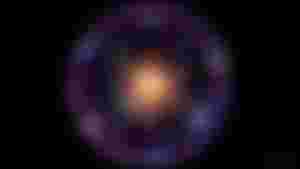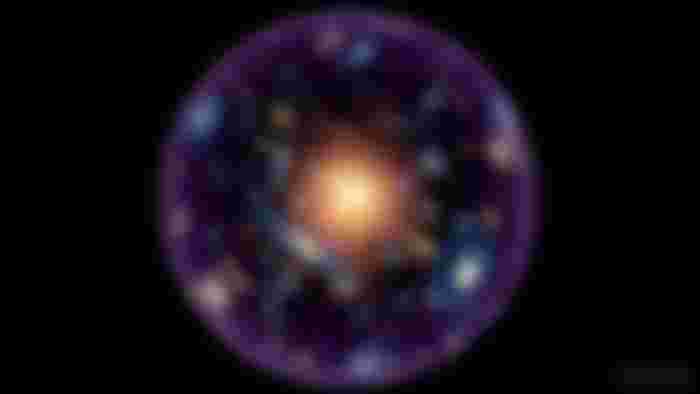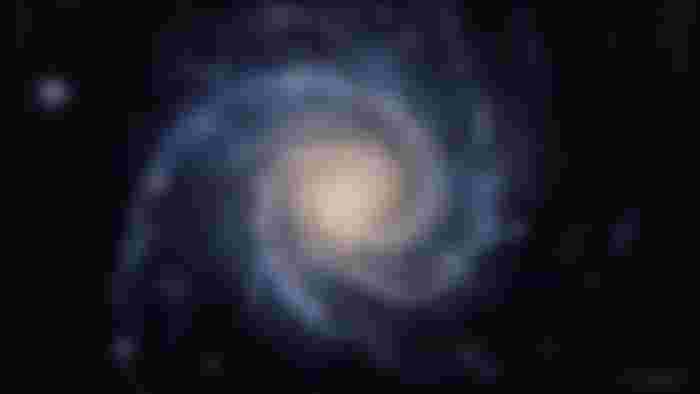The cataclysm of the universe: the possible images of the destruction of this universe

-------------------------------------------------- -------
Sometimes looking at the starry night sky, you may think that this universe is eternal youth. You would think that the human race, which is one of the billions of planets in this vast universe, would one day be extinct for some reason, but the universe might still be in its place. Not only will there be no fauna like us, there will be no plant species.
But is it really so? Does the universe, like our lives, have an end? Will the universe survive forever the way we see it now? Or will it one day fall into the bosom of death? If killed, how will death happen?
Today let's discuss a little in the light of physics.

If you think that this vast universe was created for you and your future descendants to live forever without any flaws, then there is heartbreaking bad news for you. But there's no reason to worry, the bad news isn't coming very soon, at least not billions of years ago.
Judging from the deepest, you can see that the universe is very cruel, rude, and life-threatening. Yet we should be grateful to it, thank it for giving us the gift of our short time, the time in which we can enjoy the fragrance of its form, and understand how it is evolving.
There are several theories about the end of the universe. But whatever it is, none of this is good for us, at least not for the sake of sustaining life. The first thing that will happen when it comes to the universe is that all star formation will stop at once. Black holes will then rule the entire universe. At some point they too will disappear into emptiness. Then a huge crack or crack may appear on the horizon or at the end of the event. These will happen about 10 ^ 10 ^ 50 years from today, but before that all the strange dramatic events will strike the chest of the universe. Today we will see one by one what those events are.
We need to go back a little to understand what the end of the universe will be. If we dig up and find dinosaur skeletons somewhere, we can be sure that this species once roamed here in the past. In the same way, like this skeleton, we have the authentic history of the beginning of the creation of the universe. And that is the cosmic microwave background radiation, CMB). Moreover, the more we look at galaxies or galaxies farther away from us, the more we see our past universe. We see galaxies gradually moving away from us everywhere, so if we drive these galaxies back in time, we will see that at one time they were all concentrated at one point. At that point the entire universe (all the space and mass / energy of the universe) was then in a compressed state. From there, our universe began its journey through the Big Bang about 13.6 billion years ago.
The first evidence that galaxies are gradually moving away from one another was first discovered in 1926 by the American astronomer Edwin Hubble. At first it caused quite a stir in the scientific community, but Einstein could not believe that the universe could expand. The question that has been plaguing scientists since the discovery of the expansion of the universe is whether it will continue to expand like this forever, or whether it will stop and shrink again. Considering all the observable masses of the universe, scientists first thought that the rate of expansion was gradually decreasing (Edwin Hubble, however, after his discovery, assumed that this rate of expansion was constant, that is, unchanging). But in 1996, two separate teams of scientists discovered something amazing by observing light rays coming from a supernova in a distant star. They see that the universe is not only expanding, but is also expanding over time. Those who made this profound and significant discovery were awarded the Nobel Prize in Physics in 2011.
Despite the discovery that the rate of expansion is increasing, the reason behind it still remains a mystery to us. Extensive research is still going on. The idea is that all over the universe there is a kind of invisible matter / force (or field) that creates a repulsive gravitational ball. The value of this repulsive ball depends on the distance of the galaxies. In the case of distant galaxies, the value of this ball is higher than that of the gravitational ball of gravity, so this force is able to push them away gradually. The above invisible matter is called Dark Energy or Invisible Energy. We don't know what it is, but it has been confirmed by various observations.
Let's talk about the near future from now on. Observations of the arrangement of galaxies and distant cosmic objects have shown that our universe is gradually drifting towards death. The era in which most of the stars began to form is far from over. That is about 10 billion years ago today. Sad but true is the fact that most of the stars that have already formed are burning their fuel and slowly moving towards death. This universe is also changing from gray to gray over time.
The near future of our sun is also clear to us now. About 5 billion years from now, it will turn into a massive red object. This is the stage before his death. Two billion years from now, it will swell and grow so large that it will expand, swallowing Mercury and Venus, and pushing Earth into its belly. Long before that, however, the earth would become uninhabitable for all animals and plants. The last traces of life will be erased from the earth. Such deaths of stars through supernovae are nothing new, scientists have observed the deaths of many stars so far, so it is not a fairy tale made up like a fairy tale.
What will happen to the universe after this period?
The answer depends on a number of factors. Dark Energy in particular is one of them. I have said before that galaxies are gradually moving away as a result of dark energy. About 100 million years from now, our nearest galaxy will move so far away that light will no longer reach us. Our galaxy around the world will become much like an island floating in the infinite ocean, it will seem that we have nothing in the world other than this galaxy, just empty space and empty space. Then no one would know that there are countless galaxies in this universe besides our own galaxy (unless they believe in the cosmic data recorded by their predecessors).
If, over time, the repulsive force created by dark energy loses its gravity and begins to dominate the universe, then the galaxies will suffer. Our solar system will not escape from that grip. The stars in each galaxy will begin to move away from each other, in a word, the structure of the galaxies will break down. Every galaxy will be shattered. Everything that remains in our solar system until then will be lost in infinite space, far away from one another. In science, it is called the "Big rip of the universe."
Through the above process we are fairly certain that the universe is gradually advancing towards its "thermal death". As the universe expands, its average temperature decreases. Its current average temperature is -280.42 degrees Celsius (2.73 degrees Kelvin) whereas at birth it had a temperature of about 10 million degrees Kelvin (100,000,000 degrees Kelvin). In about 1-100 trillion years from now, almost all the stars inside it will burn out and become impoverished. Then, although some stars survive, they will run out of energy in 120 trillion years. All that remains of the universe will be the ruins of stars, and these ruins are black holes or black holes, neutron stars and white dwarfs. About a hundred quintillion years from now (that is, 100,000,000,000,000,000,000,000 years, or 10 ^ 20 years), almost all of them will be swallowed up again by the massive black holes in the center of each galaxy.
In this way, infinite darkness and silence will come down to the universe one day. What happens next is that all matter-forming particles inside the universe, such as protons, can begin to break down. Of course, you may have to wait longer to break down all the particles that make up the substance. And that is 10:40 (that is, forty zeros after one) years. Then only black holes or black holes will remain in the universe and at the end of 10 ^ 100 (one hundred and one zero) years they will also evaporate away. At this stage the universe can only be considered empty because every particle inside it will be so far away from each other that they will have no reaction on each other. This is what science has called "heat death of the universe". The idea of this thermal death of the universe comes from the second law of thermodynamics. This formula states that as time moves forward, any system moves towards the maximum probability of the configuration of the microstates associated with that system. And this is what is happening in our universe. In this process, when all the energy of the universe is distributed evenly throughout the universe, there will be no free energy or heat energy left for them to run the processes that require energy (such as our lives). That is why such a death in the universe has been named "thermal death".
In addition to the above theory of the end of the universe, there are other surprising theories. One of these is the "Big change" theory. The gist of it is: Suppose you put some pure water in a clean glass. He then cooled it down to a temperature of zero degrees Celsius (the temperature at which water freezes to ice) below Celsius. Then the water will be very cold but it will stay in the glass in such a cold condition without turning into ice. Then if you put a piece of ice in that glass, you will see that the water in the glass immediately comes in contact with that piece of ice and starts turning into ice and all the water will turn into ice in an instant. In this case, it should be noted that the ice block has less heat energy than water. In other words, in this case, the water with a higher energy reservoir is adopting the pattern of less energy ice. Now this phenomenon can be applied to the void. Quantum mechanics says that there is some energy even inside a completely empty space. That is, the void is not completely void. Maybe there's a vacuum that has less energy than that. If that were true, then the whole universe could be considered as cold water. The sudden emergence of a low-energy vacuum can transform the entire universe into its own form at a speed of light that spreads across the universe, so we have no idea what's going on around us. It will have a profound effect on everything within the region in which it occurs. It can completely change the nature of the elementary particles that make up matter, and atomic formation can then become impossible. This kind of massive change could destroy human civilization, the planets and all the stars. After such a drastic change, Dark Energy may start behaving differently. It can then start pulling closer to the universe without pushing everything away, so that the universe can move forward towards a "big contraction", which is the exact opposite of the big bang.
Another possible picture of the end result of the universe is that dark energy may become more powerful as the universe expands in the distant future. Then the universe can be reduced to zero without any major shrinkage, freezing or major changes.
The strangest thing is that Dark Energy has a spooky feature. And that is, its density remains the same as the universe expands. This means that as the universe expands, it is evolving into something invisible. This is a strange object, no one knows what it is, but we can see visually that it is expanding the space and pushing the galaxies away and making the universe swell day by day.
However, this does not violate any formula of physics.
In the end, whatever the end of the universe, we still have nothing to worry about.

